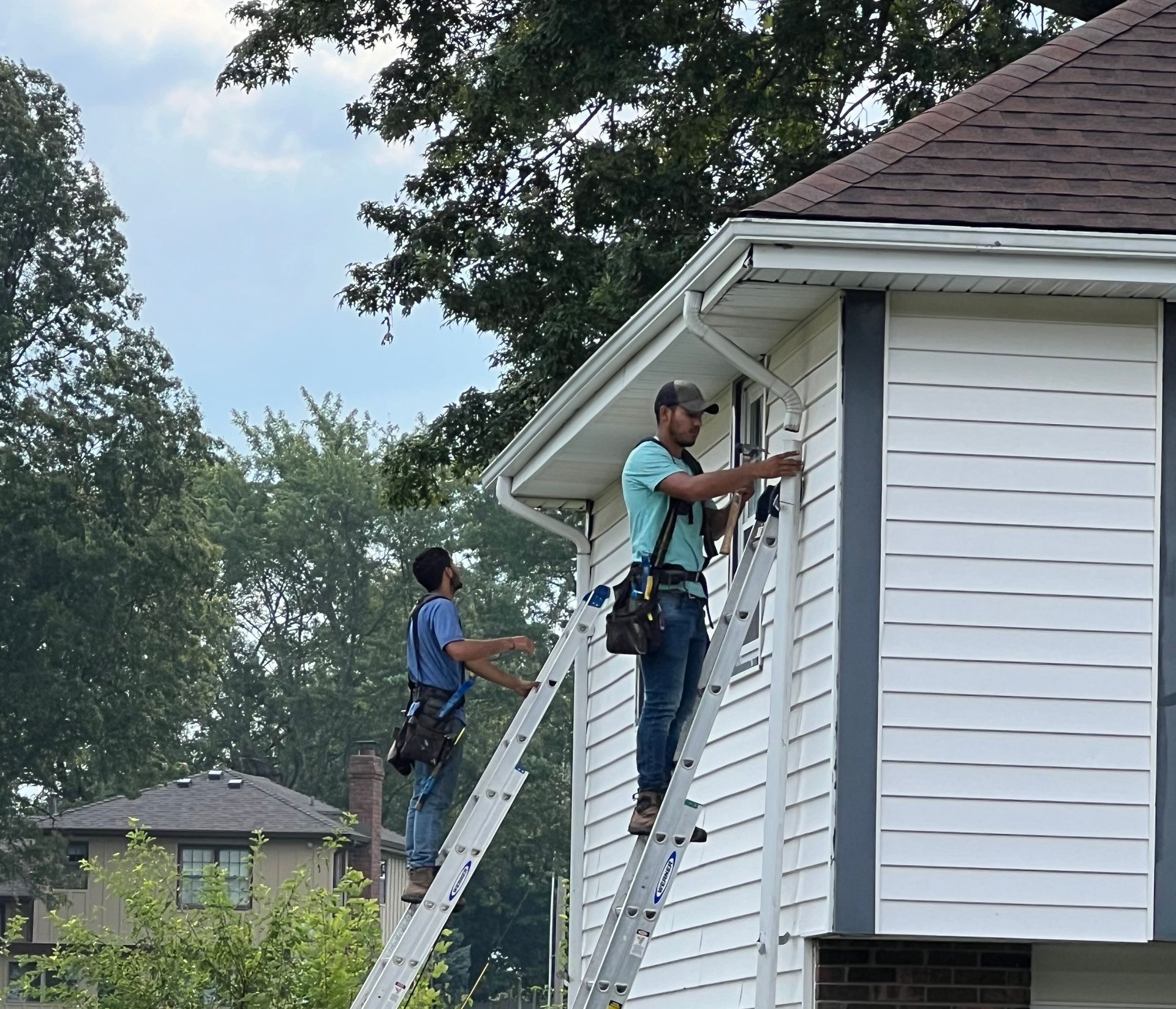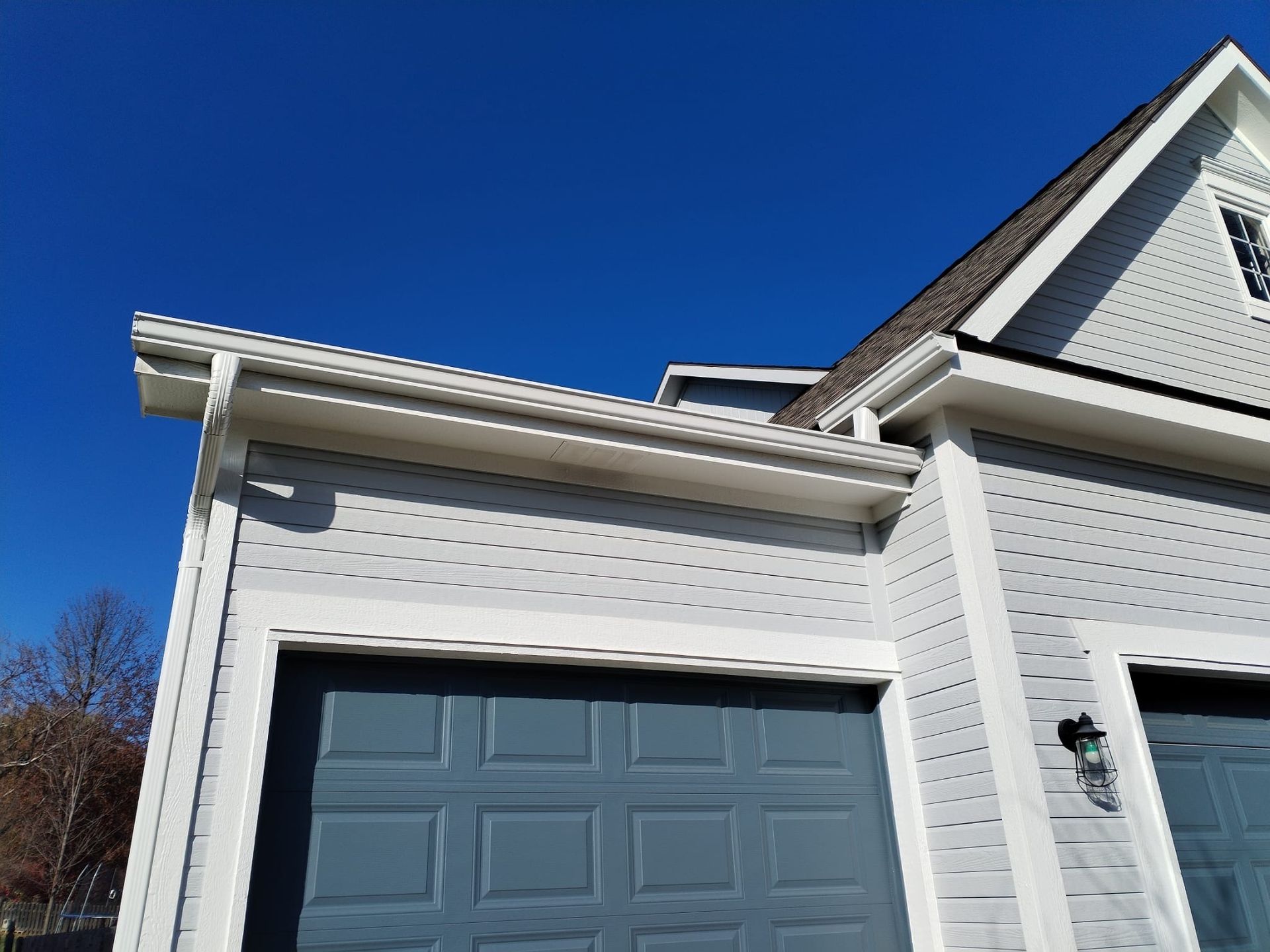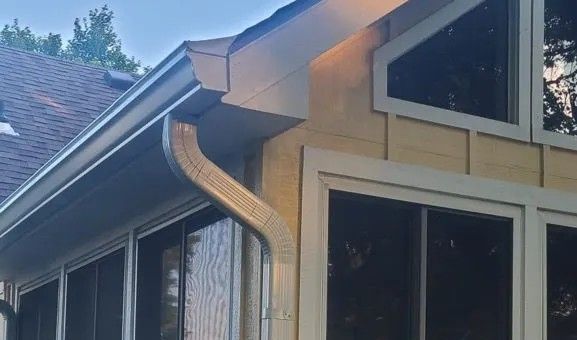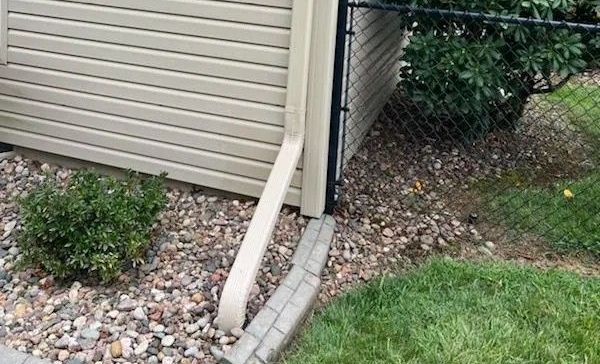Best Gutter Guards For Maple Trees: A Professional Guide For Missouri Homeowners
Living with maple trees in Peculiar, Missouri means dealing with those distinctive helicopter seeds that spin their way into gutters throughout the year. These small but persistent maple seeds can create significant blockages in your home's gutter system, leading to potential water damage and costly repairs.
Micro-mesh gutter guards provide the most effective protection against maple seeds, with their fine screening design preventing even the smallest debris from entering your gutters while allowing water to flow freely. At Big T Gutters, we've seen firsthand how the right gutter guard system can transform home maintenance from a constant struggle to a manageable task.
Professional gutter guard installation makes a significant difference in performance and longevity. Many homeowners in the Peculiar area have discovered that investing in quality gutter protection saves time and money by reducing maintenance needs and preventing water-related damage to their homes' foundations, basements, and landscaping.
Key Takeaways
- Micro-mesh gutter guards offer superior protection against maple seeds and other debris
- Professional installation ensures optimal performance and system longevity
- Quality gutter protection prevents costly water damage and reduces maintenance requirements
Why Maple Trees Require Specialized Gutter Guards
Maple trees present unique challenges for gutter systems due to their distinctive seed pods and seasonal debris patterns. The combination of small, penetrating seeds and dense leaf coverage demands specific protection solutions.
Impact of Maple Seeds on Gutters
Maple seeds, nicknamed "helicopters" or "spinners," rotate as they fall, allowing them to travel significant distances from the parent tree. These seeds measure around 1-2 inches in length with a sharp, pointed end.
The spinning motion of maple seeds enables them to wedge themselves into standard mesh guards. When wet, these seeds form dense, compacted masses that restrict water flow.
Regular gutter guards often fail because their mesh openings are too large or their designs don't account for the spinning motion of maple seeds. A single maple tree can produce thousands of seeds each season.
Common Challenges With Maple Tree Debris
Maple trees shed debris year-round, with peak periods in spring (seeds) and fall (leaves). The small size of maple seeds allows them to slip through many traditional gutter protection systems.
Standard mesh screens become prime collection points for maple seeds, creating a platform where debris accumulates. This buildup attracts insects and promotes moss growth.
During rainstorms, accumulated maple debris can create water dams that force water to overflow the gutters. This overflow can damage landscaping and foundations.
Preventing Clogged Gutters and Water Damage
Micro-mesh gutter guards with openings smaller than 1/16 inch effectively block maple seeds while allowing water flow. These systems should feature angled installations to help debris slide off.
Key Prevention Features:
- Surface tension technology
- Surgical-grade stainless steel mesh
- Self-cleaning angles
- Strong frame support
Professional installation ensures proper alignment and secure attachment to prevent gaps where seeds might enter. Regular inspections help identify any potential issues before they become serious problems.
Trim overhanging maple branches to reduce direct seed deposits into gutters. This step, combined with quality guards, creates a robust defense system.

Top Gutter Guard Types for Maple Trees
Different gutter protection systems offer varying levels of effectiveness against maple seeds, with each design bringing unique benefits for homeowners dealing with maple trees. The right choice depends on specific factors like seed volume and local weather patterns.
Micro Mesh Gutter Guard Advantages
Micro mesh guards feature ultra-fine stainless steel mesh that blocks even the smallest maple seeds while allowing water to flow freely. The tight weave, typically 50-200 holes per square inch, creates a physical barrier against helicoptering maple seeds.
These guards install at the same angle as the roof, preventing seeds from collecting on top. The angled installation also promotes natural debris shedding.
Premium micro mesh options like MasterShield utilize advanced filtration technology that handles heavy rainfall without allowing seed penetration. The surgical-grade stainless steel mesh resists corrosion and maintains performance year after year.
Gutter Covers and Their Effectiveness
Solid gutter covers employ a curved or nose-forward design to direct water into gutters while deflecting maple seeds. The smooth surface causes seeds to slide off rather than stick.
The covered design eliminates gaps where seeds could enter. Water follows the cover's curve through a narrow opening while debris falls to the ground.
Professional-grade covers feature reinforced aluminum construction that withstands heavy snow loads and intense storms. Some models include specialized ridges that break surface tension, improving water flow during downpours.
Foam Inserts: Pros and Cons
Foam inserts fill the gutter channel with porous material that filters water while blocking seeds. The open-cell foam structure allows water passage while catching debris on top.
These guards offer simple DIY installation without special tools. The foam compresses to fit any standard gutter size.
The main drawback is reduced longevity compared to metal options. Foam can degrade from UV exposure and may need replacement every 2-3 years.
Reverse Curve Gutter Systems
Reverse curve guards use water surface tension to channel rainwater around a curved hood while maple seeds fall over the edge. This design works well for moderate seed volumes.
The curved shape creates a self-cleaning action as debris slides off. Installation includes a slight forward pitch to promote proper water flow.
Most reverse curve systems feature all-aluminum construction with powder-coated finishes for durability. The seamless design prevents weak points where seeds could enter.
Noteworthy Gutter Guard Brands and Products for Maple Seeds
The most effective gutter guards for maple seeds combine micro-mesh technology with proper installation angles and durable materials. Several proven solutions exist in the marketplace with track records of successfully blocking those pesky helicopter seeds.
LeafFilter and Its Maple Seed Performance
LeafFilter's micro-mesh system features a surgical-grade stainless steel screen with 275 microns of filtration. This tight mesh prevents even the smallest maple seeds from entering gutters.
The guards install at the same angle as the roof pitch, creating optimal water flow while deflecting debris. This angle helps maple seeds slide off rather than collecting on the surface.
Independent testing shows LeafFilter blocks 99.9% of maple seeds in typical conditions. The company's lifetime transferable warranty adds significant value for homeowners.
Raptor Micro-Mesh Gutter Guard Overview
Raptor's stainless steel micro-mesh design uses a unique V-bend technology that strengthens the guard while maintaining water flow. The 304 marine-grade mesh resists corrosion and prevents maple seed penetration.
Installation requires no roof lifting or shingle modification. The guards attach directly to gutter lips using reinforced brackets.
The system handles heavy rain while blocking seeds and debris. A 25-year warranty covers material defects and performance.
Evaluating Alternative Gutter Protection Solutions
MasterShield offers an angled micro-mesh system that mirrors roof pitch for enhanced seed deflection. Their patented HiFlow technology maintains water flow even during heavy storms.
GutterBrush uses a different approach with cylindrical bristles that catch seeds before they enter gutters. This design requires minimal maintenance but may need occasional brushing.
Raindrop's curved surface creates a water adhesion effect that channels water while rejecting maple seeds. The polypropylene construction resists UV damage and weathering.
Professional Gutter Guard Installation and Local Expertise in Peculiar, MO
At Big T Gutters, our specialized knowledge of maple tree environments and local weather patterns enables precise gutter guard installations that prevent leaf buildup while maintaining proper water flow. Our professional installations create lasting protection for homes throughout Cass, Johnson, and Jackson counties.
Benefits of Expert Installation
Professional installation ensures proper fit and optimal performance of gutter guard systems. Trained technicians measure and cut materials precisely to match your roof's specifications.
Expert installers identify potential issues like loose fasteners or aging gutters that could compromise the guard system's effectiveness. They address these problems during installation.
Key Installation Benefits:
- Proper pitch alignment for maximum water flow
- Secure attachment to prevent sagging or separation
- Weather-resistant sealing at all connection points
- Professional-grade materials and fasteners
Customizing Gutter Solutions for Maple Trees
Maple trees require specific gutter guard features to handle their unique foliage patterns. Fine mesh screens block tiny maple seeds while allowing water to flow freely.
Our team selects guard systems based on:
- Leaf size and density in your area
- Seasonal seed production patterns
- Roof pitch and gutter configuration
- Local rainfall intensity
We measure canopy coverage to determine optimal guard placement and style selection for maximum protection.
Maintenance, Inspections, and Downspout Considerations
Regular inspections help maintain system effectiveness. Professional technicians check for debris accumulation and ensure proper water drainage through downspouts.
Maintenance Checklist:
- Quarterly visual inspections
- Downspout flow testing
- Gutter alignment checks
- Connection point verification
Proper downspout positioning prevents water pooling near foundations. We calculate optimal downspout placement based on roof area and local rainfall patterns.
Our service plans include seasonal adjustments to accommodate changing foliage patterns and weather conditions.
You might also like



